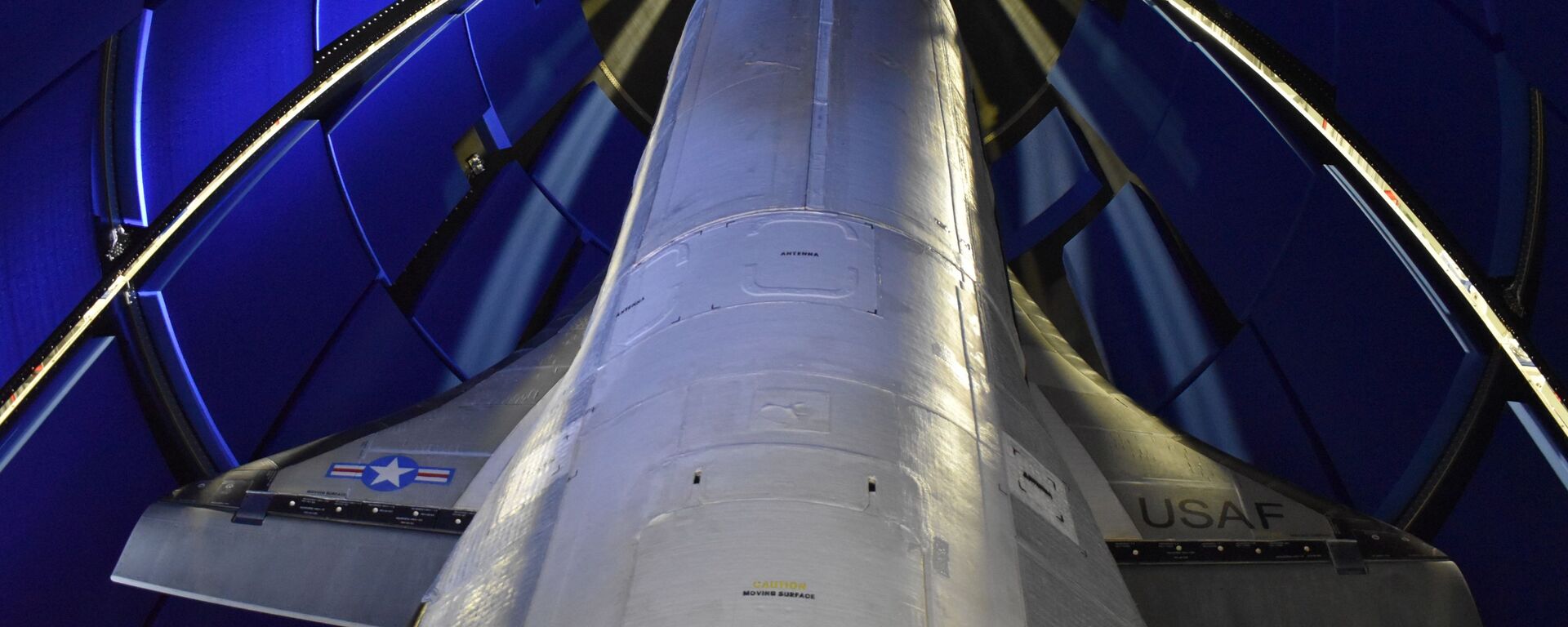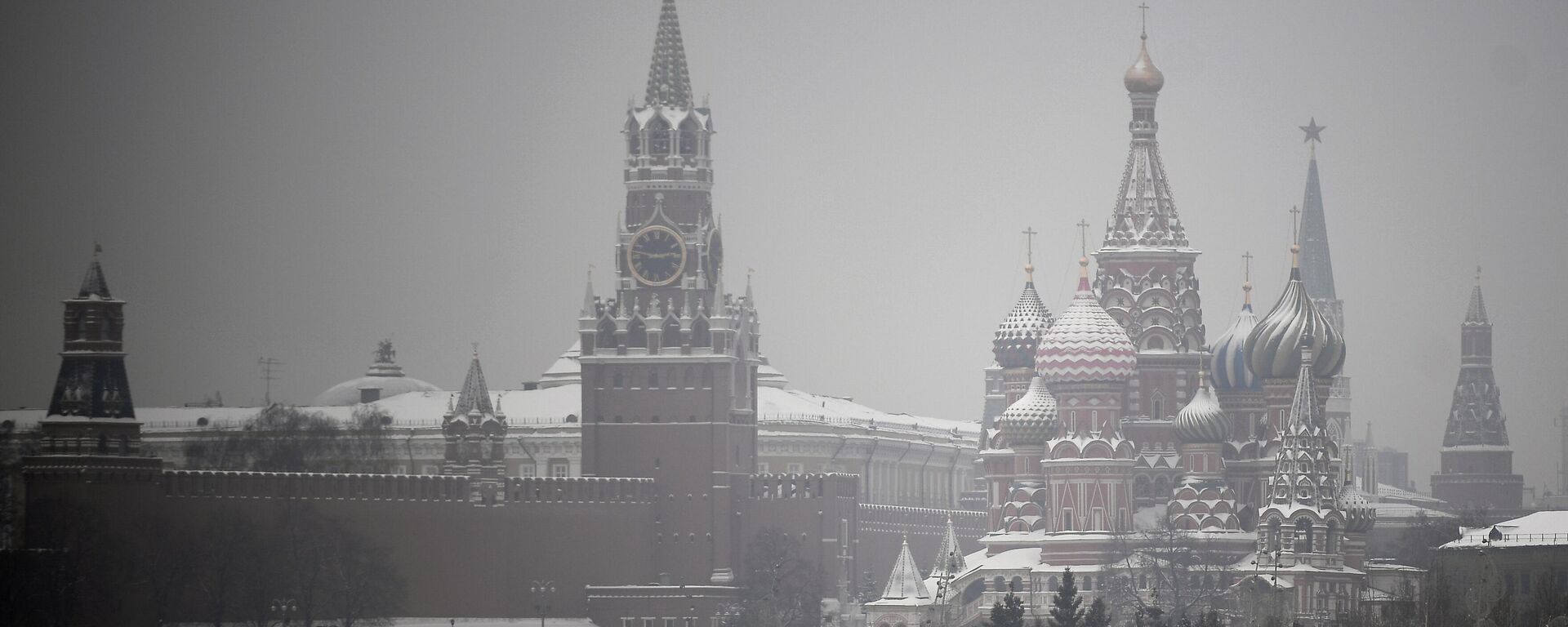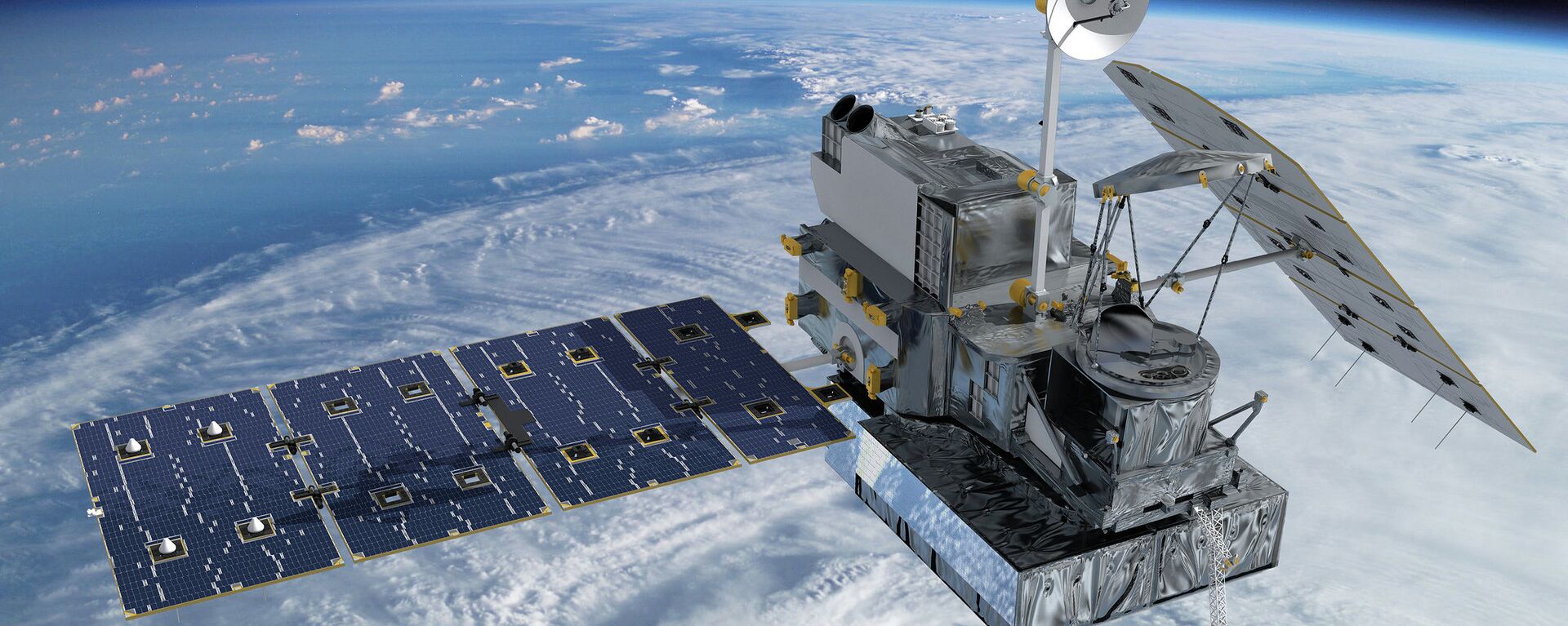https://sputnikglobe.com/20240215/us-militarizes-space-while-using-russia-threat-as-smokescreen-1116805840.html
US Militarizes Space While Using 'Russia Threat' as Smokescreen
US Militarizes Space While Using 'Russia Threat' as Smokescreen
Sputnik International
Mainstream media fuss over groundless accusations of Russia deploying nuclear weapons in space is gaining steam while diverting attention from Washington's militarization of space, Dmitry Stefanovich, a research fellow at the Institute of World Economy and International Relations, told Sputnik.
2024-02-15T18:40+0000
2024-02-15T18:40+0000
2024-02-15T18:40+0000
russia
pentagon
us
world
donald trump
earth
outer space treaty
s-500
opinion
space
https://cdn1.img.sputnikglobe.com/img/07e4/09/0f/1080468239_0:160:3072:1888_1920x0_80_0_0_0952acfa643229b133540b92dd29cf0c.jpg
The mainstream US media claimed on February 14 that there is new intelligence that Russia has developed space-based nuclear weapon capabilities designed to undermine the US satellite network. The intelligence was reportedly briefed to Congress and even key American allies with some lawmakers insisting that it was "very serious".Moscow has rejected the claims as yet another attempt by the US establishment to pass a $60 billion funding package for Ukraine, amid House unwillingness to send good money after bad to the corrupt Kiev regime.Research fellow at the Institute of World Economy and International Relations, Dmitry Stefanovich, drew attention to the fact that the mainstream media's comments are highly contradictory.On the other hand, one could hardly imagine that Moscow would resort to deploying nuclear arms in space given Moscow's obligations as a signatory country and, moreover, as a depositary country of the Outer Space Treaty, the expert stressed.What's more, the use of nuclear weapons in space would destroy spacecraft indiscriminately, knocking out American and Russian satellites alike, as well as those of third countries, Stefanovich pointed out.He likewise pointed out that in the event of a large-scale military confrontation, Moscow has conventional means to disrupt an adversary's satellite constellations without needing to resort to nuclear arms."One can shoot down satellites with missiles," Stefanovich said. "The S-500 missile defense system is capable of performing such tasks. There is no doubt that satellites in low orbit can be shot down from Earth. These tests were carried out by the Soviet Union, the US, China, and India. (…) One can jam or blind satellites. We know about the Peresvet complex, that it exists, and it presumably allows [Russia] to shield its [military positions] from observation.""Plus there are options with orbital interception. That is, there are so-called satellite inspectors that could provide tracking [of enemy spacecraft]; there are robotic arms that can theoretically grab satellites. (…) Plus, of course, returning to non-kinetic scenarios, these are different options using electronic warfare systems, as well as cyber impact systems," the expert continued.According to Stefanovich, Russia's major aim is to prevent the militarization of space, whereas the US openly proclaims a goal of space dominance.Thus, the US created the Space Force (USSF) in December 2019 – a new branch of the US Armed Forces. While announcing the establishment of the new Pentagon unit in June 2018, former US President Donald Trump specifically underlined the need to "have American dominance in space."Meanwhile, the US has itself shown it is willing and able to knock out satellites.In early 2008, the Pentagon launched Operation Burnt Frost which used a navy-guided missile cruiser to launch an SM-3 missile into space which knocked down a non-functioning National Reconnaissance Office (NRO) satellite and showcased its capabilities in shooting down satellites.Days before the Pentagon's strike, China and Russia introduced a draft Treaty on the Prevention of the Placement of Weapons in Outer Space, the Threat or Use of Force against Outer Space Objects (PPWT) to the Conference on Disarmament (CD), the world's permanent multilateral disarmament treaty negotiating body. However, the US dismissed the proposal, dubbing it "a diplomatic ploy by the two nations to gain a military advantage"."When it comes to the American potential, they have created a space force and a huge satellite constellation. The main threat here is not yet in strike systems, but in surveillance systems, both systems that allow, in fact, reconnaissance activities and target designation on Earth. This is a really serious problem," the researcher concluded.
https://sputnikglobe.com/20240215/kremlin-weighs-in-on-white-houses-secret-briefing-to-press-congress-to-boost-kiev-funding-1116796557.html
https://sputnikglobe.com/20240215/what-are-russias-top-5-anti-satellite-systems-1116802215.html
https://sputnikglobe.com/20231229/whats-the-us-x-37b-spacecraft-and-what-military-purpose-does-it-serve-in-space-1115877419.html
https://sputnikglobe.com/20231212/us-must-win-space-to-win-wars-says-us-general-1115529786.html
russia
earth
Sputnik International
feedback@sputniknews.com
+74956456601
MIA „Rosiya Segodnya“
2024
News
en_EN
Sputnik International
feedback@sputniknews.com
+74956456601
MIA „Rosiya Segodnya“
Sputnik International
feedback@sputniknews.com
+74956456601
MIA „Rosiya Segodnya“
russia space-based nuclear weapons, us space force, us dominance in space, us development of anti-satellite weapons, us militarization of space, satellite constellations
russia space-based nuclear weapons, us space force, us dominance in space, us development of anti-satellite weapons, us militarization of space, satellite constellations
US Militarizes Space While Using 'Russia Threat' as Smokescreen
Mainstream media fuss over groundless accusations of Russia deploying nuclear weapons in space is gaining steam while diverting attention from Washington's militarization of space, Dmitry Stefanovich, a research fellow at the Institute of World Economy and International Relations, told Sputnik.
The mainstream US media claimed on February 14 that there is new intelligence that Russia has developed space-based nuclear weapon capabilities designed to undermine the US satellite network.
The intelligence was reportedly briefed to Congress and even key American allies with some lawmakers insisting that it was "very serious".
Moscow
has rejected the claims as yet another attempt by the US establishment to pass a $60 billion funding package for Ukraine, amid House unwillingness to send good money after bad to the corrupt Kiev regime.
Research fellow at the Institute of World Economy and International Relations, Dmitry Stefanovich, drew attention to the fact that the mainstream media's comments are highly contradictory.
"Some say that something has already been deployed [in space], some say that something is planned to be deployed, some are talking about nuclear arms, and some are speculating about nuclear power equipment," the researcher said, adding that the comments resemble nothing more than an exercise in smoke and mirrors.
On the other hand, one could hardly imagine that Moscow would resort to deploying nuclear arms in space given Moscow's obligations as a signatory country and, moreover, as a depositary country of the Outer Space Treaty, the expert stressed.
The Outer Space Treaty outlines that "states shall not place nuclear weapons or other weapons of mass destruction in orbit or on celestial bodies or station them in outer space in any other manner." The Treaty was opened for signature by the three "depository governments" – the USSR (with Russia being its legal successor), the UK and the US – in January 1967. It entered into force in October 1967.
What's more, the use of nuclear weapons in space would destroy spacecraft indiscriminately, knocking out American and Russian satellites alike, as well as those of third countries, Stefanovich pointed out.
"Starting to shoot down satellites all in a row is quite a serious escalation," warned the researcher.
He likewise pointed out that in the event of a large-scale military confrontation, Moscow has conventional means to disrupt an adversary's satellite constellations without needing to resort to nuclear arms.
"One can shoot down satellites with missiles," Stefanovich said. "The S-500 missile defense system is capable of performing such tasks. There is no doubt that satellites in low orbit can be shot down from Earth. These tests were carried out by the Soviet Union, the US, China, and India. (…) One can jam or blind satellites. We know about the Peresvet complex, that it exists, and it presumably allows [Russia] to shield its [military positions] from observation."
"Plus there are options with orbital interception. That is, there are so-called satellite inspectors that could provide tracking [of enemy spacecraft]; there are robotic arms that can theoretically grab satellites. (…) Plus, of course, returning to non-kinetic scenarios, these are different options using electronic warfare systems, as well as cyber impact systems," the expert continued.
According to Stefanovich, Russia's major aim is to prevent the militarization of space, whereas the US openly proclaims a goal of space dominance.
Thus, the US created
the Space Force (USSF) in December 2019 – a new branch of the US Armed Forces. While announcing the establishment of the new Pentagon unit in June 2018, former US President Donald Trump specifically underlined the need to
"have American dominance in space."
29 December 2023, 15:13 GMT
Meanwhile, the US has itself shown it is willing and able
to knock out satellites.
In early 2008, the Pentagon launched Operation Burnt Frost which used a navy-guided missile cruiser to launch an SM-3 missile into space which knocked down a non-functioning National Reconnaissance Office (NRO) satellite and showcased its capabilities in shooting down satellites.
Days before the Pentagon's strike, China and Russia introduced a draft Treaty on the Prevention of the Placement of Weapons in Outer Space, the Threat or Use of Force against Outer Space Objects (PPWT) to the Conference on Disarmament (CD), the world's permanent multilateral disarmament treaty negotiating body. However, the US dismissed the proposal, dubbing it "a diplomatic ploy by the two nations to gain a military advantage".
"The militarization of space began, in fact, simultaneously with the beginning of the space age," Stefanovich said. "Space has always had a military dimension. Now the problem we are trying to solve is to prevent weapons from being placed in space. Russia's position is that we need a legally binding document to prevent the placement of weapons in space. We need to stop the arms race in outer space."
"When it comes to the American potential, they have created a space force and a huge satellite constellation. The main threat here is not yet in strike systems, but in surveillance systems, both systems that allow, in fact, reconnaissance activities and target designation on Earth. This is a really serious problem," the researcher concluded.

12 December 2023, 03:12 GMT








